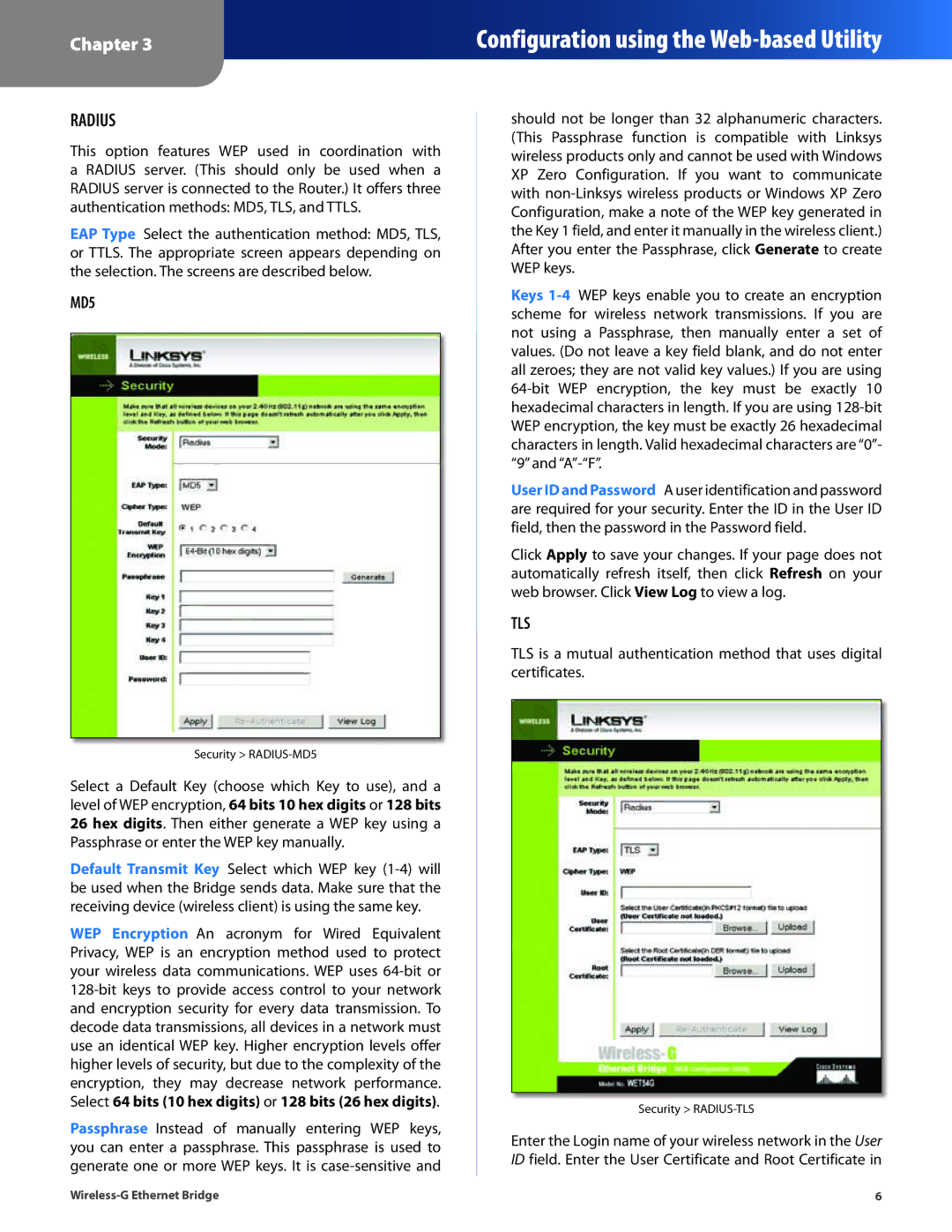
Chapter 3
Configuration using the
RADIUS
This option features WEP used in coordination with a RADIUS server. (This should only be used when a RADIUS server is connected to the Router.) It offers three authentication methods: MD5, TLS, and TTLS.
EAP Type Select the authentication method: MD5, TLS, or TTLS. The appropriate screen appears depending on the selection. The screens are described below.
MD5
Security >
Select a Default Key (choose which Key to use), and a level of WEP encryption, 64 bits 10 hex digits or 128 bits 26 hex digits. Then either generate a WEP key using a Passphrase or enter the WEP key manually.
Default Transmit Key Select which WEP key
WEP Encryption An acronym for Wired Equivalent Privacy, WEP is an encryption method used to protect your wireless data communications. WEP uses
Passphrase Instead of manually entering WEP keys, you can enter a passphrase. This passphrase is used to generate one or more WEP keys. It is
should not be longer than 32 alphanumeric characters. (This Passphrase function is compatible with Linksys wireless products only and cannot be used with Windows XP Zero Configuration. If you want to communicate with
Keys
User ID and Password A user identification and password are required for your security. Enter the ID in the User ID field, then the password in the Password field.
Click Apply to save your changes. If your page does not automatically refresh itself, then click Refresh on your web browser. Click View Log to view a log.
TLS
TLS is a mutual authentication method that uses digital certificates.
Security >
Enter the Login name of your wireless network in the User ID field. Enter the User Certificate and Root Certificate in
6 |
